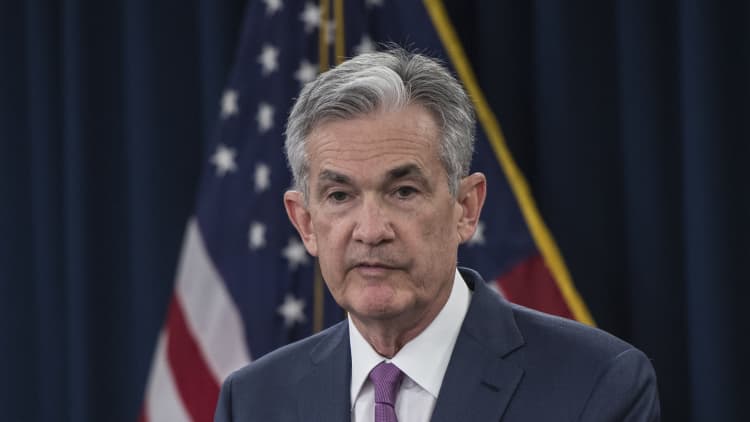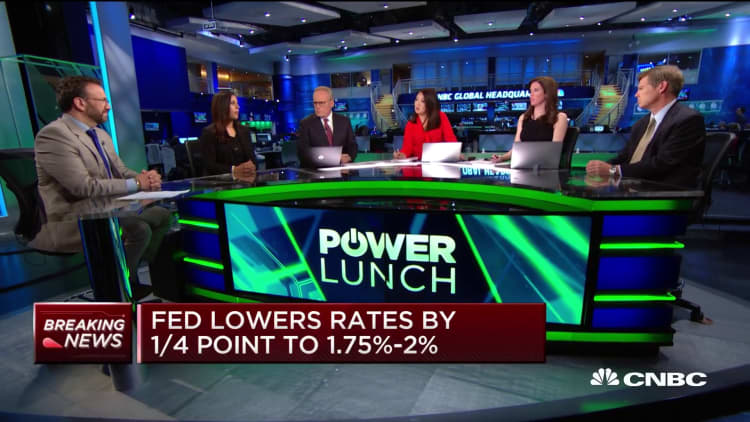
The Federal Reserve approved a much-anticipated quarter-point interest rate cut Wednesday but offered few indications that further reductions are ahead as members split on what to do next.
Following its two-day policy meeting, the central bank announced that it would take down its benchmark overnight lending rate to a target range of 1.75% to 2%. That comes nearly two months after the policymaking Federal Open Market Committee went ahead with its first cut in 11 years.
Major U.S. stock exchanges dropped after the decision was announced.
In addition to the reduction, the Fed cut the interest it pays on excess reserves by 30 basis points, greater than the funds rate cut, amid a breakdown this week in the overnight repurchase lending market. The move was aimed at keeping the funds rate within its target range; the interest on excessive reserves (IOER) historically has acted as a guardrail for the funds rate, which traded 5 basis points above the target.
While the committee as a whole has not pointed to further cuts, divisions remain among individual policymakers. Three Fed regional presidents — Esther George of Kansas City, Eric Rosengren of Boston and James Bullard of St. Louis — each voted no. George and Rosengren have said they prefer to keep the funds rate steady while Bullard has advocated for a 50 basis point cut.
That was the most dissents for a Fed decision since December 2014.
President Donald Trump, who has called Fed policymakers "boneheads" for not cutting rates enough, tore into Wednesday's decision, saying Chairman Jay Powell and his colleagues have "no 'guts.'" Trump says the Fed is risking U.S. competitiveness by keeping rates substantially higher than most of the rest of the developed world.
Divided outlook
The policy statement offered almost no language difference from the July statement. The committee again cited "the implications of global developments for the economic outlook as well as muted inflation pressures" as the primary rationale for the cut.
As for its economic assessment, the Fed tweaked language to indicate that household spending is "rising at a strong pace" while "business fixed investment and exports have weakened."
According to the Fed's "dot plot" of individual expectations, five members thought the FOMC should have held its previous range of 2% to 2.25%, five approved of the 25 basis point cut but keeping rates there through the rest of the year, and seven favored at least one more cut this year.

The indecision comes at an important time for the U.S. economy.
Recession fears had risen during the summer amid heightened U.S.-China trade tensions, weakening data particularly in the manufacturing sector, and a progressively rockier global economy. However, the data has firmed up recently, and Fed Chairman Jerome Powell has held to his position that while the central bank will do what is needed to maintain the recovery, he views these cuts as a "midcycle adjustment" and not part of a more aggressive strategy to drive rates lower.
The dot plot did show a lower general trend in rate expectations for subsequent years. But committee members favor keep the longer-run expectations for the funds rate intact at 2.5%.
Members actually raised their expectations for growth since the last summary of economic projections in June. The committee now sees GDP rising at a 2.2% pace this year, compared with 2.1% in June, though the longer-run expectations remain at 1.9%.
Inflation projections were unchanged at 1.8% for 2019 and 2.5% over the longer run.



